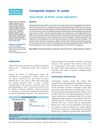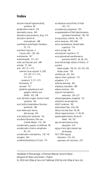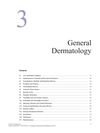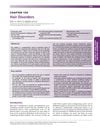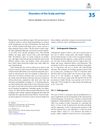Animals in Dermatology
March 2024
in “
Indian Journal of Dermatology/Indian journal of dermatology
”
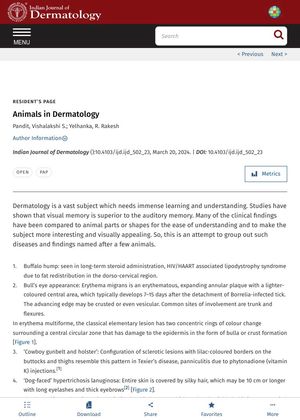
TLDR Using animal names for skin conditions helps with learning and memory.
The document "Animals in Dermatology" discusses dermatological conditions named after animals to enhance visual learning and memory. Examples include "Buffalo hump" from long-term steroid use, "Bull’s eye appearance" in erythema migrans, "Dog-faced" hypertrichosis lanuginosa, "Elephant skin" in chronic onchocerciasis, and "Horseshoe-shaped" rim of hair in androgenetic alopecia. These terms make the subject more engaging and easier to understand by drawing visual parallels between clinical presentations and familiar animal characteristics. The document also covers patient consent, financial support, and conflicts of interest.
